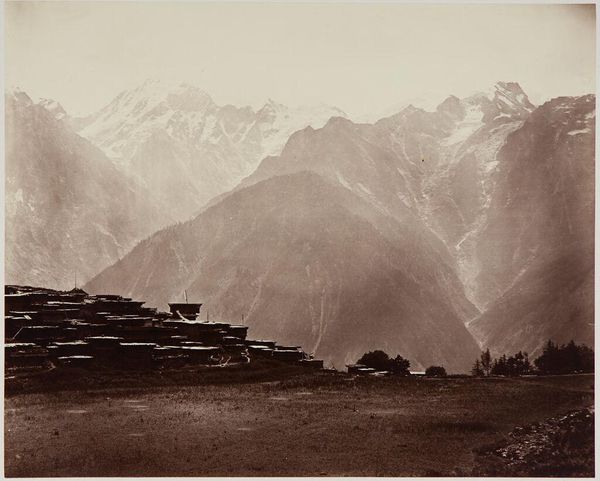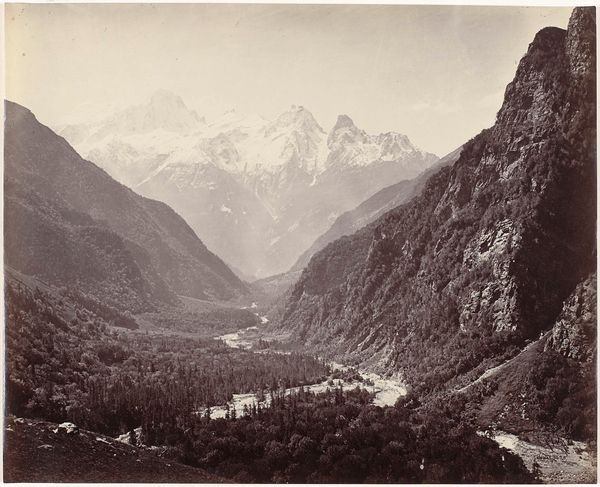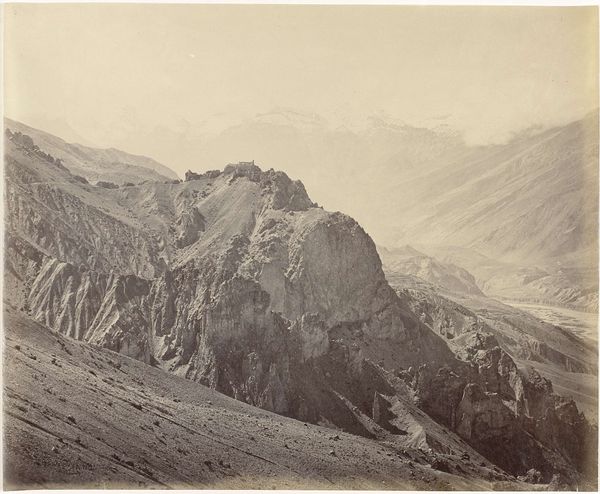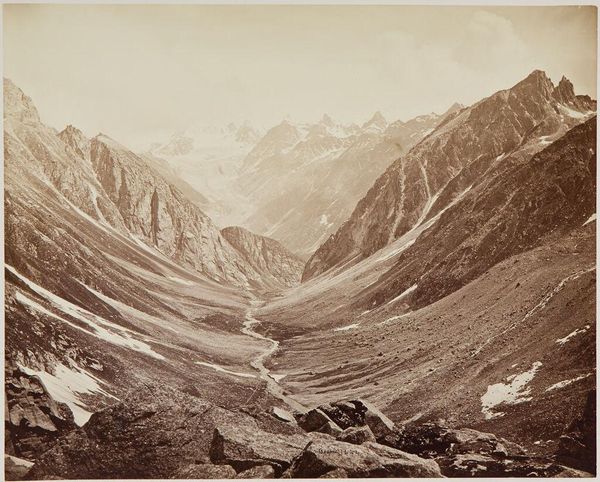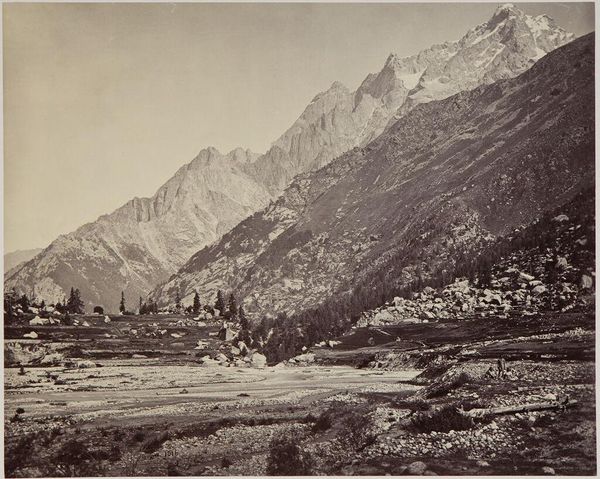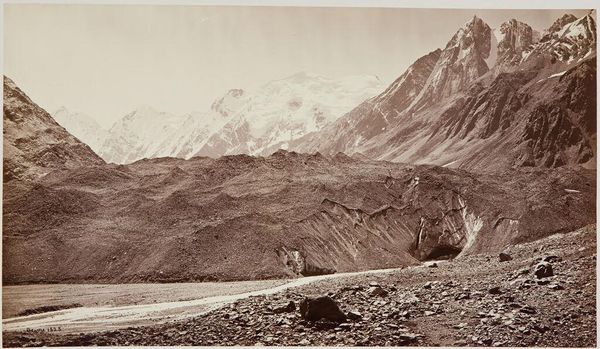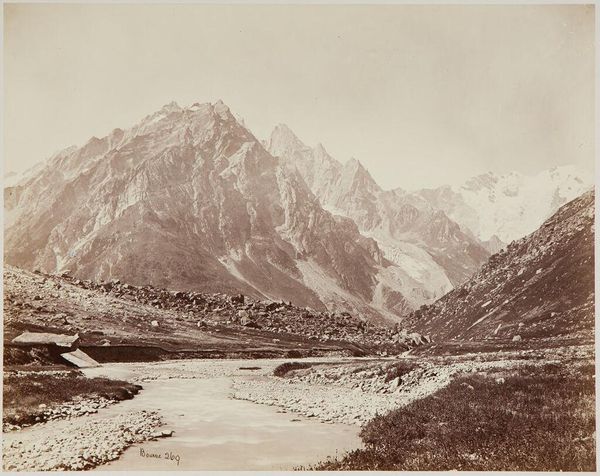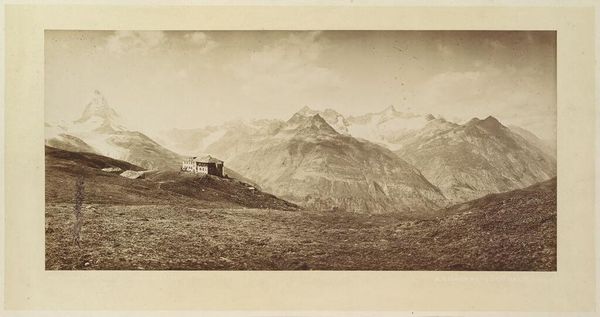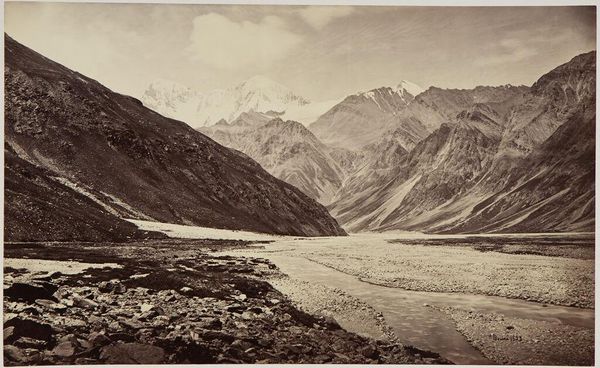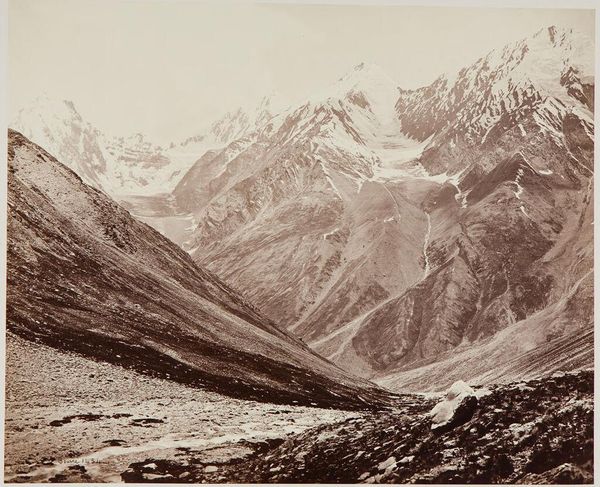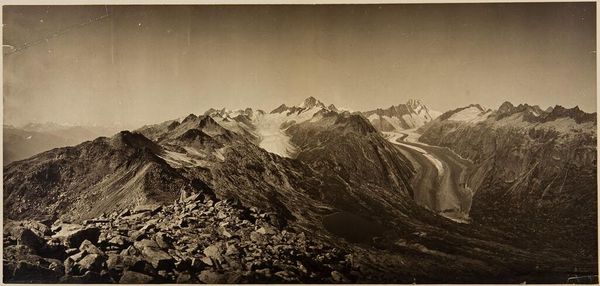
View of the Chini village, with the Himalayas at the background, Himachal Pradesh, India 1863 - 1864
0:00
0:00
photography, albumen-print
#
asian-art
#
nature photography
#
landscape
#
outdoor photography
#
photography
#
orientalism
#
albumen-print
Dimensions: height 242 mm, width 287 mm, height 345 mm, width 400 mm
Copyright: Rijks Museum: Open Domain
Editor: Here we have Samuel Bourne's albumen print, "View of the Chini village, with the Himalayas at the background, Himachal Pradesh, India," taken between 1863 and 1864. The scale of the mountains looming behind the village is just incredible. How do you approach a piece like this? Curator: Initially, I examine the compositional arrangement. Note the stark contrast between the detailed village in the foreground and the ethereal, almost indistinct mountains receding into the background. Bourne has meticulously layered the visual plane to create depth. Consider the tonality; how does the albumen print's sepia tone affect the viewer’s perception of space and light? Editor: The sepia does make it feel very distant and timeless. I'm also noticing the way the village almost mirrors the shape of the mountains behind it, echoing that steep incline. Is that deliberate, do you think? Curator: That is a compelling observation. Indeed, the mirroring effect reinforces the relationship between human settlement and the natural environment. We should note the technical proficiency, given the cumbersome photographic methods of the time. The clarity of the village against the soft focus of the peaks speaks volumes about Bourne's mastery of his medium. What principles of spatial organization do you observe? Editor: Well, there's the foreground, middle ground, and background very clearly defined, pushing our eye back. Plus, the textures—sharp in front and soft further away. Curator: Precisely. Bourne masterfully employs linear perspective and atmospheric perspective to enhance the spatial qualities. The photograph is a compelling study of form, light, and the artist's manipulation of photographic techniques to convey a specific visual experience. I see a careful balance between the elements. It's fascinating to consider the purely visual relationships at play here, transcending the literal depiction. Editor: This has given me a fresh pair of eyes for how technique alone can create such a deep, interesting picture, even beyond its historical context. Thank you.
Comments
No comments
Be the first to comment and join the conversation on the ultimate creative platform.
